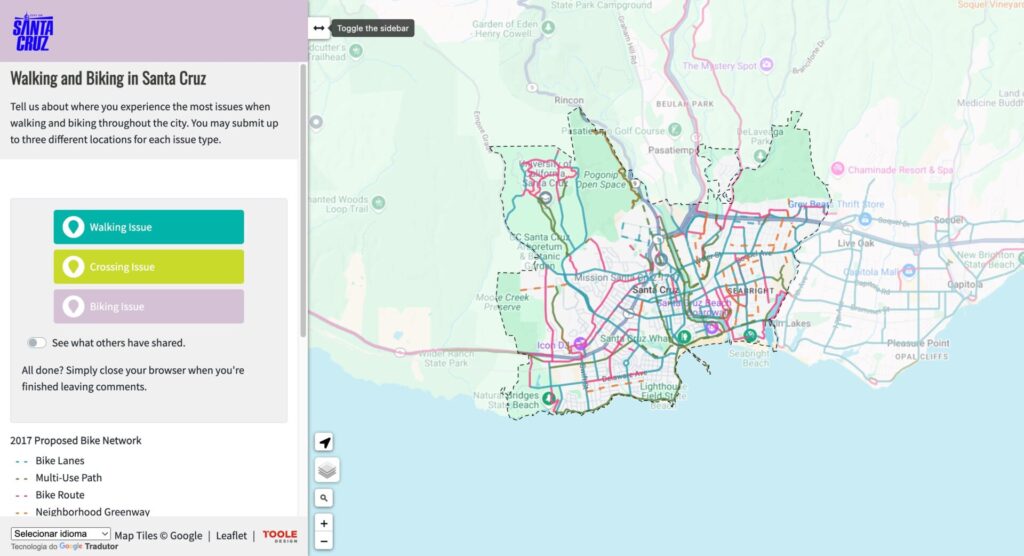
Safe, Connected, Enjoyable Walking and Rolling in Santa Cruz
Active Transportation Plan (ATP)

About This Plan

Active transportation is for everyone. It is a way of planning for mobility in our city that considers the needs of parents pushing strollers, students biking to school, seniors walking to the park, commuters going to work, skaters doing tricks, wheelchair users visiting museums, UCSC students carrying groceries by bike, and tourists getting lunch downtown after the beach. Crafting a network of safe and connected places where people can choose to easily walk, bike, and roll creates more vibrant spaces for all.
The current edition of the City of Santa Cruz Active Transportation Plan (ATP) was adopted in 2017. To keep up with the needs of the city and craft a vision of its thriving future, City of Santa Cruz staff are preparing an update to the ATP. At the core of the ATP update is a commitment to fostering a livable city: a place where people of all ages and physical abilities can access safe, convenient, and enjoyable ways of getting around. We’ll tackle this work in three phases, involving the community and their voices as we go.
Project Updates
Learn about Proposed Bikeways, Sidewalk Improvements, City Programs and Policies below.
Existing Conditions
Read the Phase 1 Existing Conditions Summary (PDF): this document provides an overview of existing conditions for walking and bicycling in Santa Cruz as identified through data, observation, and public input. This information will provide the basis for the infrastructure, program, and policy recommendations and prioritization in the Active Transportation Plan (ATP) Update.
101
Miles of Bike Lanes
87
Miles of Bike Routes
22
Miles of Multi-use Paths
45
Missing Miles of Sidewalks
636
Missing Curb Ramps
Phase 2 Summary
Outreach
The project team presented findings from Phase 1 in an Open House and follow-up focus groups to identify high-level themes. Those key themes informed the Draft Recommendation and Prioritization process.

Draft Project List and Prioritization
Bikeway projects were prioritized using a data-driven approach with three primary factors—Safety, Access, and Equity. Each factor includes measurable variables such as crash history, level of bicycle traffic stress, proximity to key destinations, and population data.Based on input from city staff, public engagement, and the Technical Advisory Committee, Safety comprises 40% of the total score, Access comprises 35%, and Equity comprises 25%. The map below presents the total score for each project out of a total of 100. See below for maps of prioritized bikeway and sidewalk recommendations.
See the full Proposed Bikeways, Sidewalk Improvements, City Programs and Policies (PDF).

Questions?
Connect with a City Trasportation Planner

Claire Gallogly
Principal Transportation Planner, City of Santa Cruz
cgallogly@santacruzca.gov
(831)420-5107






